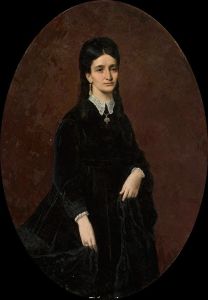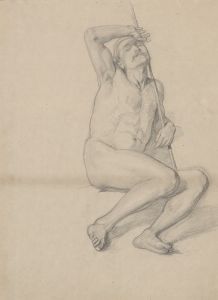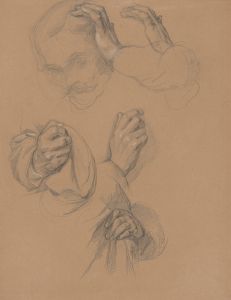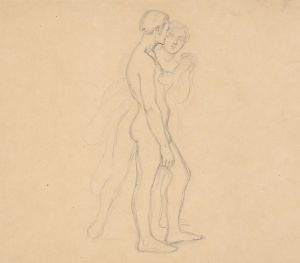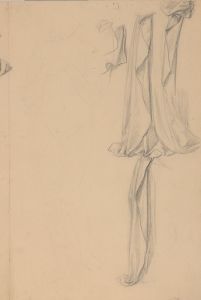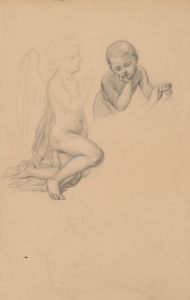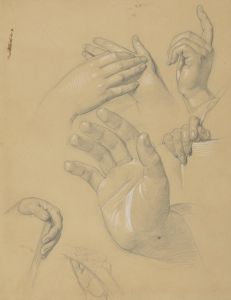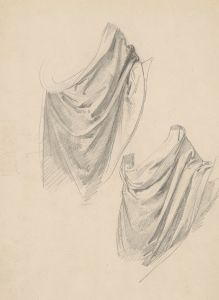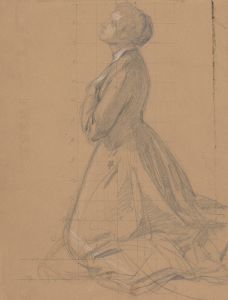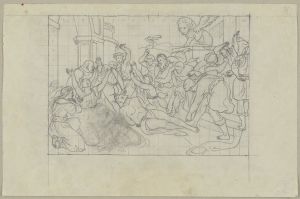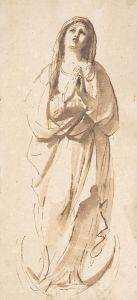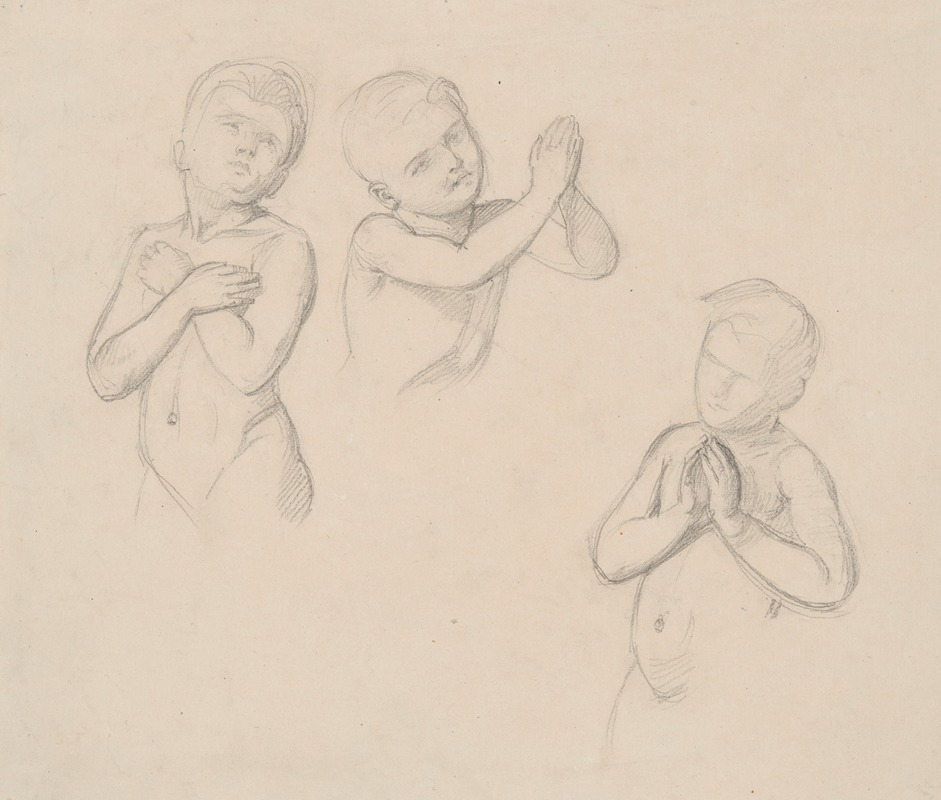
Nude studies of boys for the figures of angels in the painting ‘The Immaculate Conception of the Blessed Virgin Mary’
A hand-painted replica of Józef Simmler’s masterpiece Nude studies of boys for the figures of angels in the painting ‘The Immaculate Conception of the Blessed Virgin Mary’, meticulously crafted by professional artists to capture the true essence of the original. Each piece is created with museum-quality canvas and rare mineral pigments, carefully painted by experienced artists with delicate brushstrokes and rich, layered colors to perfectly recreate the texture of the original artwork. Unlike machine-printed reproductions, this hand-painted version brings the painting to life, infused with the artist’s emotions and skill in every stroke. Whether for personal collection or home decoration, it instantly elevates the artistic atmosphere of any space.
Józef Simmler, a notable Polish painter of the 19th century, is renowned for his historical and religious paintings. One of his significant works is "The Immaculate Conception of the Blessed Virgin Mary," which he completed in 1855. This painting is a representation of the Catholic dogma of the Immaculate Conception, which holds that the Virgin Mary was conceived without original sin.
In preparation for this painting, Simmler created several nude studies of boys to serve as references for the figures of angels that he intended to include in the final composition. These studies were crucial for Simmler to achieve a realistic and anatomically accurate depiction of the angelic figures, which are a prominent feature in the painting. The use of nude studies was a common practice among artists of the time, as it allowed them to understand the human form better and translate that knowledge into their work.
Simmler's "The Immaculate Conception of the Blessed Virgin Mary" is characterized by its meticulous attention to detail and the delicate rendering of the figures. The painting depicts the Virgin Mary surrounded by cherubic angels, who are portrayed with a sense of innocence and purity. The angels' youthful and idealized forms are a testament to Simmler's skill in capturing the essence of the divine and the ethereal.
The painting is also notable for its use of light and color, which Simmler employed to create a heavenly and serene atmosphere. The Virgin Mary is depicted with a halo, symbolizing her sanctity, and she is dressed in flowing robes that enhance the sense of movement and grace. The angels, with their delicate wings and expressive faces, add to the overall composition's sense of harmony and spiritual elevation.
Simmler's work on "The Immaculate Conception of the Blessed Virgin Mary" reflects the influence of the Nazarene movement, which sought to revive the purity and spirituality of early Christian art. The movement emphasized the importance of religious themes and the use of traditional techniques, which is evident in Simmler's careful and reverent approach to this painting.
The painting is housed in the National Museum in Warsaw, where it continues to be admired for its artistic and historical significance. It stands as a testament to Józef Simmler's contribution to Polish art and his ability to convey profound religious themes through his masterful use of composition, color, and form.
In summary, Józef Simmler's "The Immaculate Conception of the Blessed Virgin Mary" is a significant work that showcases his skill in religious painting. The nude studies of boys that he created for the figures of angels were an essential part of his artistic process, allowing him to achieve a realistic and idealized depiction of these celestial beings. The painting remains an important piece in the history of Polish art and continues to be celebrated for its beauty and spiritual depth.





